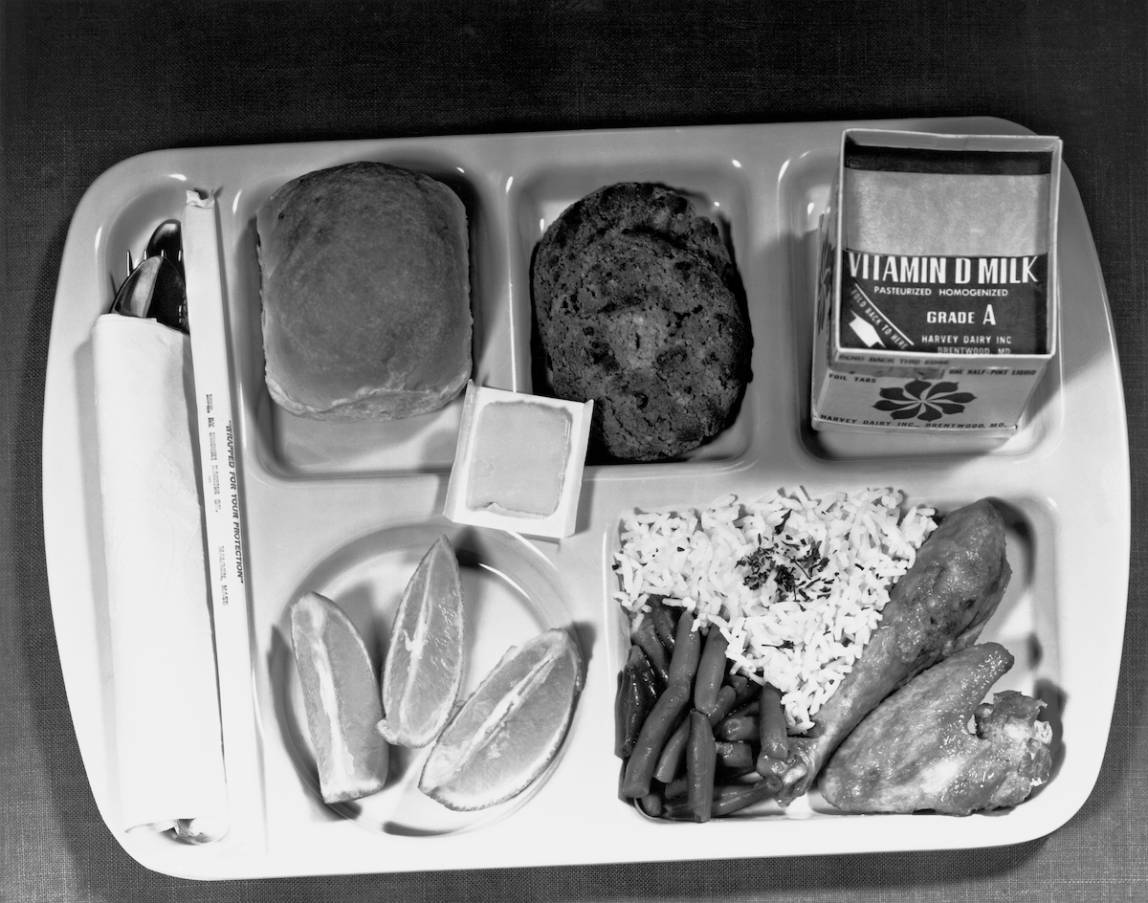An Abbreviated History of School Lunch in America
As America’s youngsters begin yet another school year, so too will surely begin again the annual debate over what those kids are eating. School lunches today are, to put it mildly, a source of much controversy—but this has not always been the case.
By 1900, 34 of the then 45 states had laws calling for compulsory education of all children under the age of 14. Well aware of the tremendous social inequality of this industrial era, reformers saw the need to improve the outcomes of all students drawn into the education system. “If it is a matter of principle in democratic America that every child shall be given a certain amount of instruction,” wrote reformer Robert Hunter in his heart-wrenching 1904 book Poverty, “let us render it possible for them to receive it… by making full and adequate provision for the physical needs of the children who come from the homes of poverty.” Access to healthy food was one of these needs and schools were in a unique position to provide their pupils with nutritious meals.
Philadelphia and Boston were the first two American cities to institute school lunch programs, starting at the end of the 19th century. These efforts were spearheaded largely by welfare organizations, such as the Women’s Educational and Industrial Union in Boston and the Starr Center Association in Philadelphia, which began serving up hot meals for the price of a penny in high schools as early as 1894.
The response these programs received was overwhelmingly positive. As one report submitted to The Journal of Home Economicsin 1910 describes, “the teachers [in Boston] are unanimous in the belief that the luncheons are helping the children both physically and mentally.”
These programs were shown to be not only providing growing bodies with nutritious foods, but they were also teaching children healthy eating habits and helping them learn to choose their food wisely. With such excellent results, school lunches readily expanded to more schools and more municipalities across the county.
It wasn’t until the Great Depression that the Federal government became involved in school food programs. In the early 1930s, farmers were facing financial ruin thanks to price collapses, laborers were having extreme difficulty finding work, and poor children were experiencing increasing malnutrition and hunger. School lunch programs emerged as the perfect solution to all three problems.
Using the many arms of President Roosevelt’s New Deal, the federal government purchased surplus crops from farmers and employed thousands of women to cook and serve these food items to hungry students. By 1941, federally supported school meals programs were operating in all States, plus the District of Columbia and Puerto Rico, with 64,298 individuals serving over 2 million lunches daily.
But the school lunch program was not a permanent mandate. When food supplies dwindled and labor became scarce during World War II, the number of school meals served declined precipitously. Recognizing the benefits of keeping children well fed and healthy, in 1946 Congress passed the National School Lunch Act:
It is hereby declared to be the policy of Congress, as a measure of national security to safeguard the health and well-being of the Nation’s children and to encourage the domestic consumption of nutritious agricultural commodities and other food, by assisting the States, through grant-in-aid and other means, in providing an adequate supply of food and other facilities for the establishment, maintenance, operation, and expansion of nonprofit school lunch programs.
In the decades after, the programs expanded to feed more children in more ways. Eisenhower and Nixon both increased the budgets for school lunch programs while the Child Nutrition Act of 1966added more subsidies for low-income children, as well as school milk and school breakfast programs.
Things changed when Ronald Reagan took office.
In 1981, as part of an attempt to curtail government waste, the Reagan Administration slashed Federal school lunch spending by $1.5 billion and attempted to make up for the reduced budget by shrinking lunch portions, reducing the number of poor childreneligible for free or reduced-lunch, and famously declaring that ketchup was a vegetable in order to meet nutrition standards.
With less federal support, school lunches in the 1980s and 1990s became increasingly privatized and nutrition standards often took a back seat to the bottom line. This same period saw childhood obesity rates in the United States skyrocket. School lunches were thrust to the forefront of the debate over healthy kids. The patchwork of regulation remaining regarding food safety and wholesomeness led TIME to declare that many school districts were “flunking lunch.”
In 2010, in an attempt to return to the original intentions of school lunch programs, Congress passed the Healthy, Hunger-Free Kids Act of 2010, which allows the Department of Agriculture to overhaul school meals to meet new nutrition standards. While no one can deny the importance of better eating for growing minds (or the enthusiasm of First Lady Michelle Obama), critics claim the program has produced unpalatable foods that lead to food waste, smaller earnings for school lunch programs, and even more kids going without lunch. Those in favor of the reforms claim simply that it’s working. A 2016 report declares that, in spite of the hubbub in cafeterias across the country, the new act is indeed providing kids with healthier food at school.
Regardless of where one stands on the debate it’s worth remembering that school lunches were once uncontroversial. And surely we can all agree on the importance of their original role: a means to make sure children are well fed and healthy, so they can grow and learn and better the nation.
Reposted with Permission from Get your history fix in one place: sign up for the weekly TIME History newsletter. Emelyn Rude is a food historian and the author of Tastes Like Chicken, available now.

No comments:
Post a Comment
Remember: I will review all comments before posting and if you wish your information to remain confidential, please know that I will honor your request.